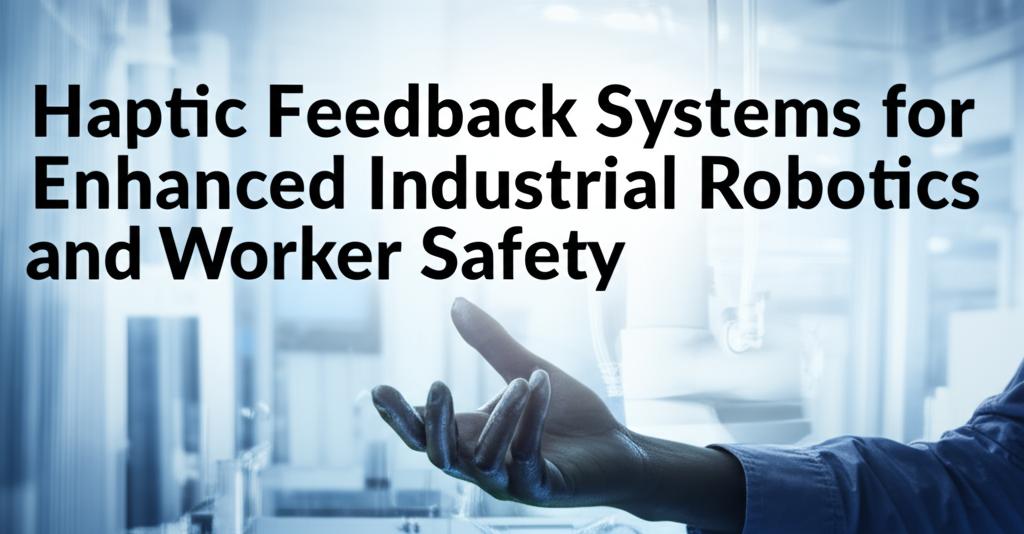Haptic feedback systems are increasingly recognized as a critical technology for advancing industrial robotics, primarily by improving how humans and robots work together and significantly enhancing worker safety. The core idea is to provide human operators with a sense of touch and force feedback when controlling or interacting with robotic systems, leading to more intuitive and safer operations.
Recent developments highlight how haptic technology is moving beyond simple vibrations, like those in smartphones, to play a crucial role in industrial settings. Researchers are creating sophisticated haptic devices that transmit real-time tactile sensations and force interactions to users who are remotely operating robots. This allows for more delicate and accurate manipulation of objects, mirroring the dexterity of human touch. For instance, specific devices can convey detailed force information, such as the sensation of pushing or pulling, directly to the operator's fingertips. This enhanced sensory information helps users achieve higher accuracy in manipulation tasks and significantly reduces collisions with obstacles compared to conventional control methods.
The integration of haptic feedback is particularly beneficial in high-risk industrial environments like manufacturing plants, steel mills, and construction sites, where many tasks still require human intervention despite advancements in automation. Operating complex robotic systems can lead to accidents if even minor mistakes occur. Haptic interfaces address this by giving operators a clearer understanding of the robot's interaction with its surroundings, thereby preventing potential mishaps.
Furthermore, haptic systems are being combined with other advanced technologies like digital twins and augmented reality (AR). Digital twin technology allows users to simulate robot operations in a virtual environment before actual deployment, while AR can enhance user immersion and concentration during operations. This combination not only improves safety and precision but also serves as an effective training tool, allowing even novice users to quickly adapt to controlling complex robotic systems.
Innovations in haptic technology also include the development of wearable devices, such as gloves or even full-body suits, that provide haptic feedback. These wearables can communicate a robot's intended path or alert users to potential hazards through vibrations or force sensations. Some systems use spatially organized tactors to provide directional information, indicating the robot's future movements relative to the worker. This intuitive feedback mechanism allows workers to be more aware of the robot's actions, leading to faster and safer task completion.
The field is also exploring multisensory haptic feedback, which delivers more than one type of touch stimulus simultaneously to create a richer and more realistic experience. This can involve different actuation methods, such as polymeric actuation (using smart polymers that change shape), fluidic actuation (using pressurized air or liquid, particularly in soft robotics), and thermal actuation (providing warming or cooling sensations). However, challenges remain in understanding how the brain processes multiple haptic cues and in addressing the variability in how individuals perceive touch due to factors like skin elasticity and external conditions.
The ultimate goal is to create a seamless and intuitive collaboration between humans and robots. By providing a more natural way to interact with and control robotic systems, haptic feedback not only enhances operational efficiency and precision but, crucially, reduces the physical and cognitive load on workers, leading to a safer and more productive industrial environment. As robotic systems become more prevalent, these advancements in haptic feedback will be key to shaping the future of human-robot interaction in industry.

